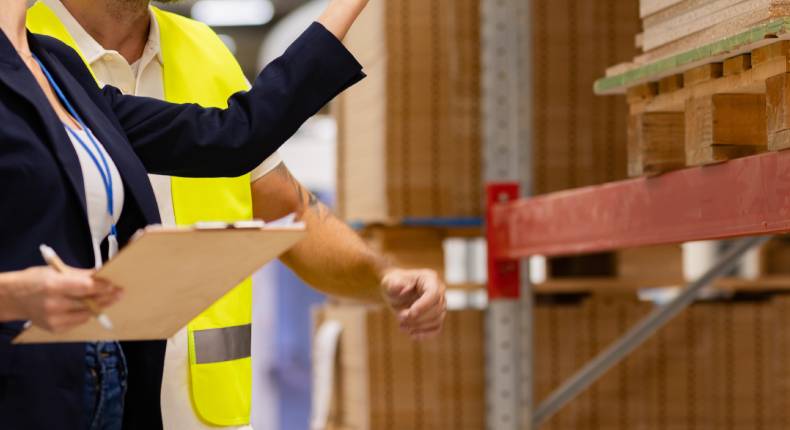Information
Legal information
Funded by


In the textile logistics sector, understanding the distinction between picking and packing is crucial to achieving maximum productivity in the supply chain. In this analysis, we focus on the key aspects of these processes, not only addressing their definitions but also exploring the various types of packing and picking that ensure the proper functioning of textile warehouses, as well as the main differences between them.
Índice de contenidos
ToggleWarehouse picking, also known as order picking, is the process of selecting specific items from inventory to fulfill an order.
In the textile world, it involves gathering garments or related products according to the specifications of the purchase order. This results in faster delivery times and lower costs.
Packing, or order fulfillment, refers to the phase in which the products selected in the picking process are organized, packed, and prepared for shipment.
This involves ensuring that garments are packaged properly, considering their size, weight, and fragility. The quality of packing directly influences customer satisfaction and product integrity during transportation.
In the textile warehouse environment, productivity is a priority to remain competitive. Therefore, it is essential to examine different packing and picking strategies and methods tailored to the specific needs of each operation.
Let’s take a closer look at the different types of packing and picking that exist.
Understanding the differences between packing and picking is crucial for effective operation. Let’s explore these distinctions further, highlighting how each phase plays a fundamental role in the textile supply chain.
The main difference between picking and packing lies in their specific focuses and functions. While picking focuses on the precise selection of products from inventory to fulfill an order, packing deals with the preparation, organization, and packaging of those products for shipment.
Picking, involving manual or automated selection of individual products, tends to be more complex in terms of coordination and inventory management. On the other hand, packing, while also requiring precision, focuses on the orderly and secure arrangement of selected products. Operational complexity varies, and understanding these differences allows companies to adjust their processes to maximize efficiency.
Picking can be a labor-intensive process and susceptible to human errors, especially when done manually. Physical handling of delicate textile products can increase the risk of damage or mixing of items. The implementation of advanced technologies, such as automated picking, helps reduce these challenges.
The packing phase ensures product integrity during transportation. Factors such as proper packaging selection, protection of fragile products, and orderly presentation of items in the box must be considered. Careful packing reduces the possibility of returns due to product damage.
Picking and packing operate in temporal synchronization, but their relationship is sequential. Picking precedes packing, as products must be selected before they can be prepared for shipment. Proper coordination between both phases is indispensable to maintain a constant flow and avoid delivery delays.
Picking, being labor-intensive, significantly benefits from technology and automation. Automated picking systems, such as robots or voice systems, can speed up the process and reduce the likelihood of errors. On the other hand, packing, while it can also benefit from automation, often requires a more personalized approach to accommodate the variety of textile products.
While it is true that these are processes with certain differences, they also maintain a certain complementarity as the execution of these processes occurs sequentially.
Thus, picking occurs first since it involves the selection and extraction of products, while packing refers to the packaging, verification, and labeling of the same, being the second phase of the process.
Although these activities are different, their consecutive execution and the interrelation between the processes can make their distinction not entirely clear.
In summary, understanding the differences between picking and packing is essential for productivity in textile logistics. Integrating advanced strategies, such as automated systems and specialized methods, can make a difference in speed and accuracy in warehouses. By perfecting these processes, textile logistics companies can not only meet market demands but also exceed customer expectations.
Information
Legal information
Funded by


